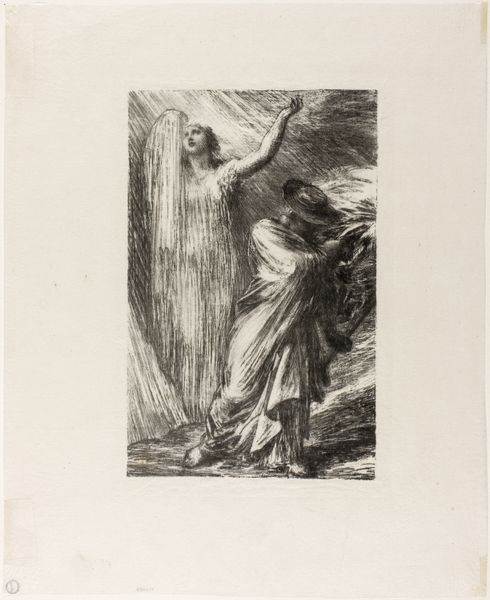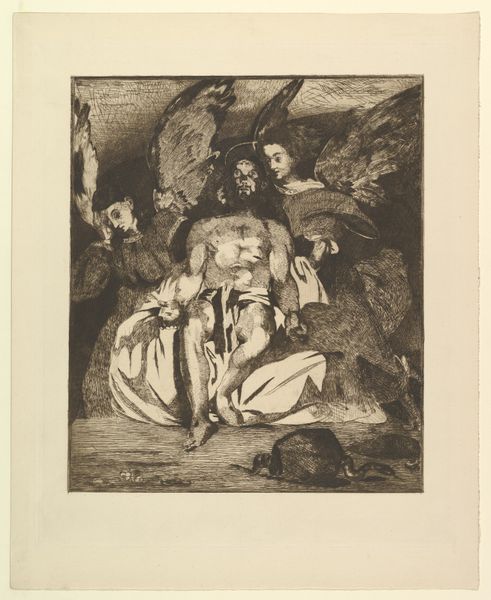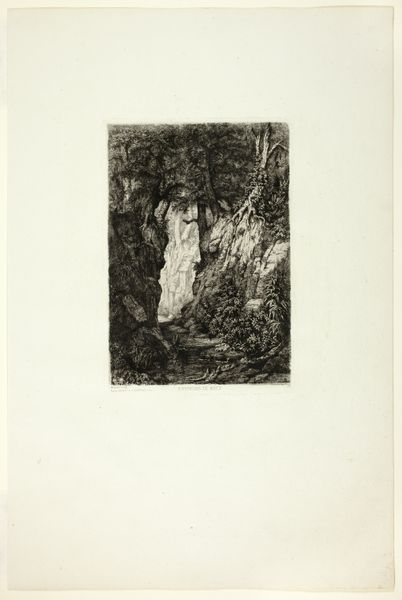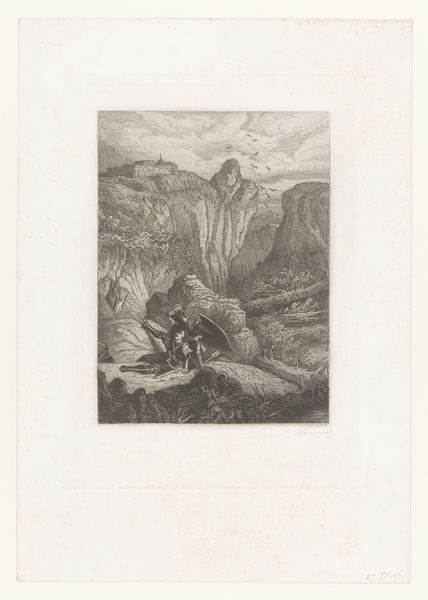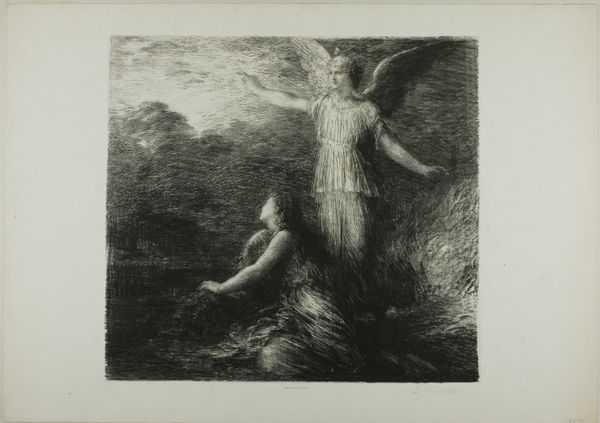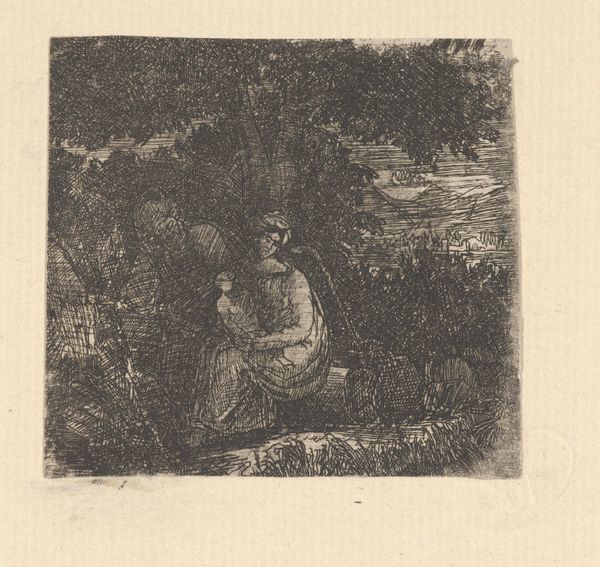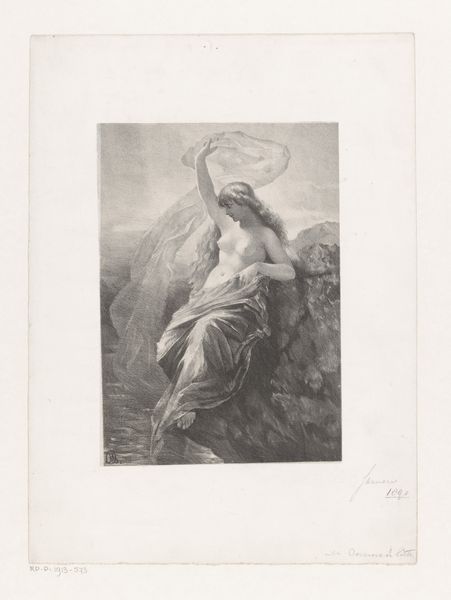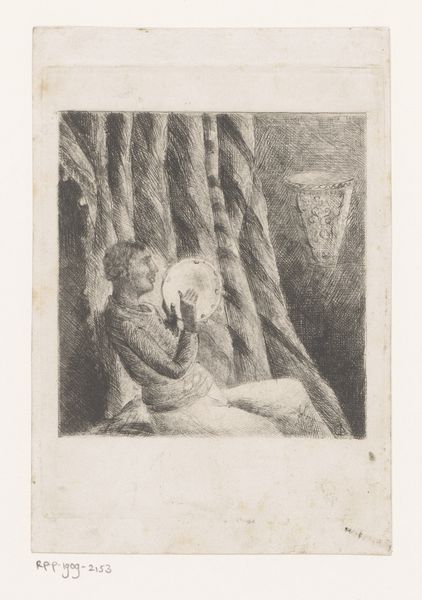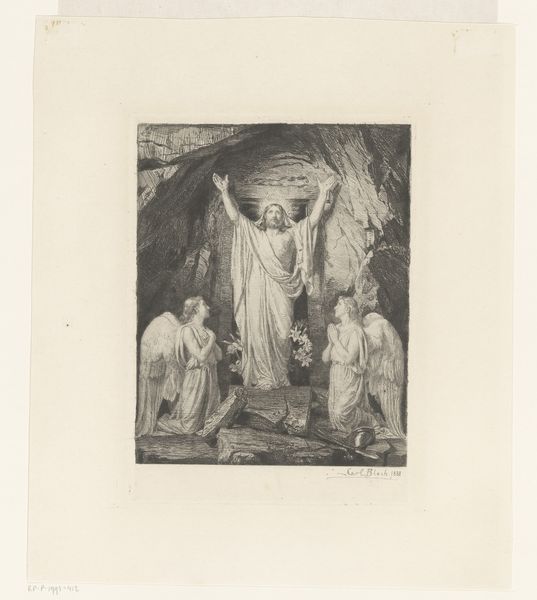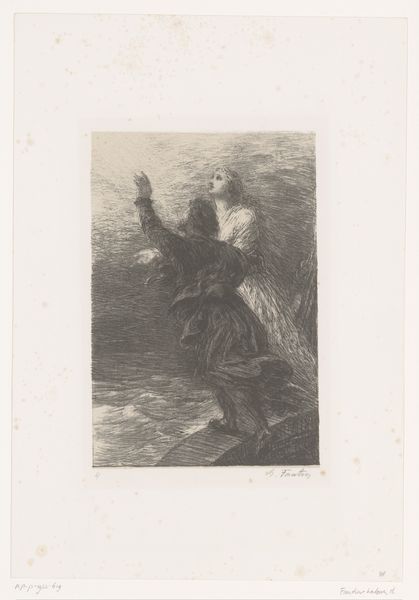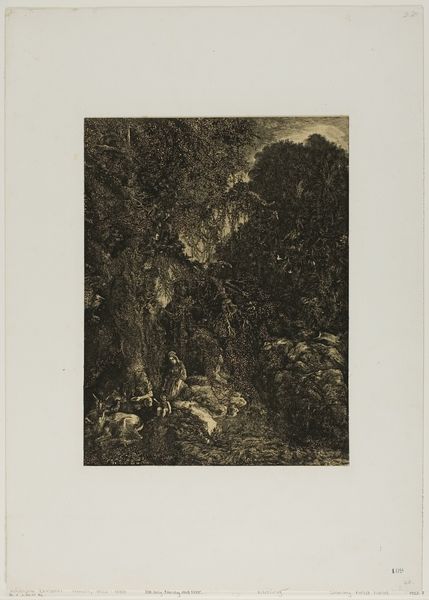
Sad Forebodings of What is Going to Happen, plate one from The Disasters of War Possibly 1814 - 1863
0:00
0:00
drawing, print, etching, paper
#
portrait
#
drawing
#
narrative-art
# print
#
etching
#
war
#
figuration
#
paper
#
form
#
romanticism
#
line
#
history-painting
#
realism
Dimensions: 147 × 190 mm (image); 175 × 220 mm (plate); 240 × 337 mm (sheet)
Copyright: Public Domain
Curator: Look at the texture of this work, "Sad Forebodings of What is Going to Happen, plate one from The Disasters of War," created by Francisco de Goya. The etches are so densely layered, creating a sense of foreboding right away. Editor: Yes, a heavy and violent scene looms, doesn’t it? There's a distinct lack of hope as he is facing something truly devastating. I am immediately struck by how this image addresses the trauma of conflict, the emotional and psychological toll it takes on individuals and their communities, with such haunting precision. Curator: Goya was using an etching technique, manipulating metal plates through acid, a labor-intensive process. Consider the grit, the time it took to render such a potent image—an image of fear and resignation. These "Disasters of War" capture moments of chaos through the physical act of manipulating these materials. Editor: It really challenges the glorification of war often presented. Goya, living during the Napoleonic wars and the political turmoil in Spain, witnessed firsthand the devastation of conflict. His personal experiences profoundly influenced his artistic choices. Here, the human figure, seemingly cornered, represents a universal symbol for victims of war. The figure's vulnerability confronts issues of power, oppression, and resistance in a time of great unrest. Curator: Right, and by focusing on the materials used—the acid, the metal, the ink—we begin to understand Goya’s hand, and we see the making of these prints, reproduced and distributed. His visual protest then became a distributed one. Editor: This distributed protest directly challenged dominant narratives, making it even more subversive. Consider that art institutions in Goya’s time often propagated narratives of power and patriotism, reinforcing specific political ideologies. Yet this disrupts the accepted norms. And though we see Goya making political statements, these can have wide ranging effects when considering race, gender, and other facets of a globalized world. Curator: Exactly! He uses accessible and reproducible material. Etchings like these became essential tools for spreading messages—making them inherently radical due to their production and distribution capabilities. Editor: Reflecting on the figure and the violence around him I realize how powerful Goya was. Curator: His process was so very intentional to leave us, generations later, shaken.
Comments
No comments
Be the first to comment and join the conversation on the ultimate creative platform.
